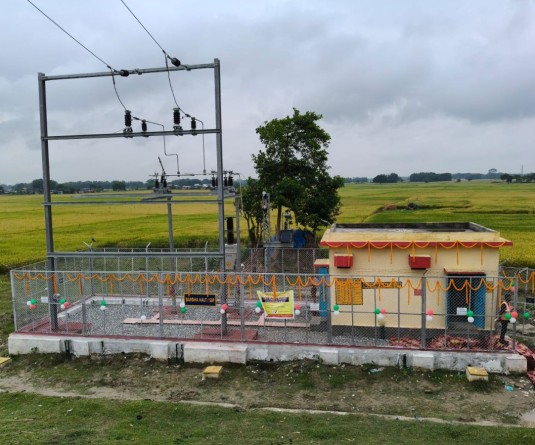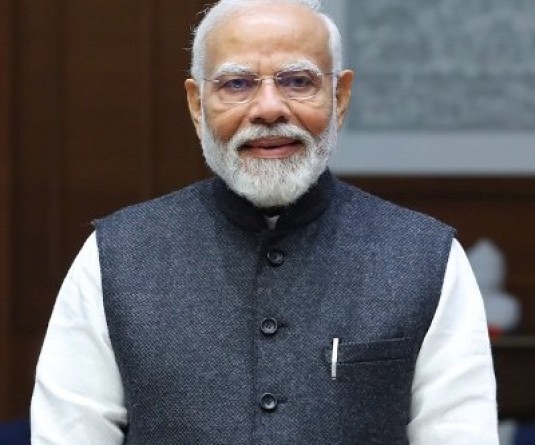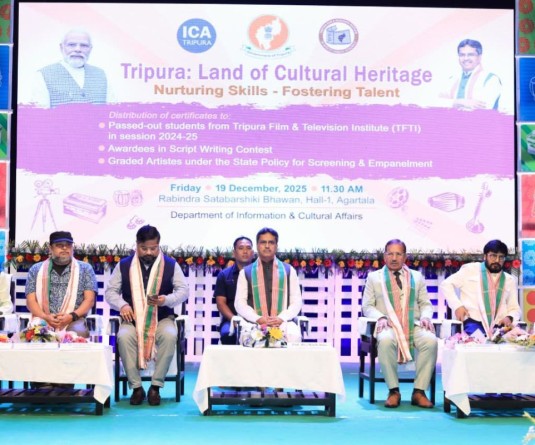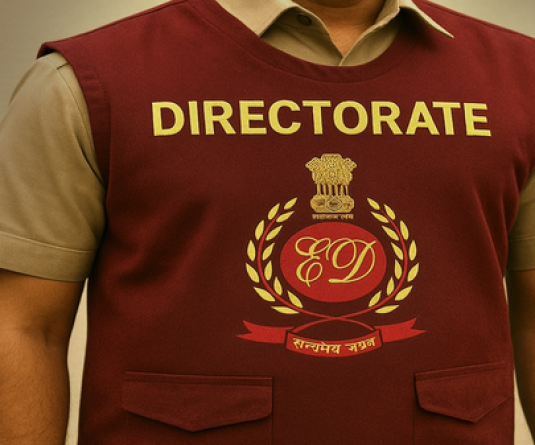University of Tartu’s Professor Ülo Valk from University and Plenary Speaker Mayako Murai from Kanagawa University, Japan on the 2nd day and final of the International Karbi Winter Workshop on January 17 at Jirsong Asong, Diphu, Karbi Anglong.
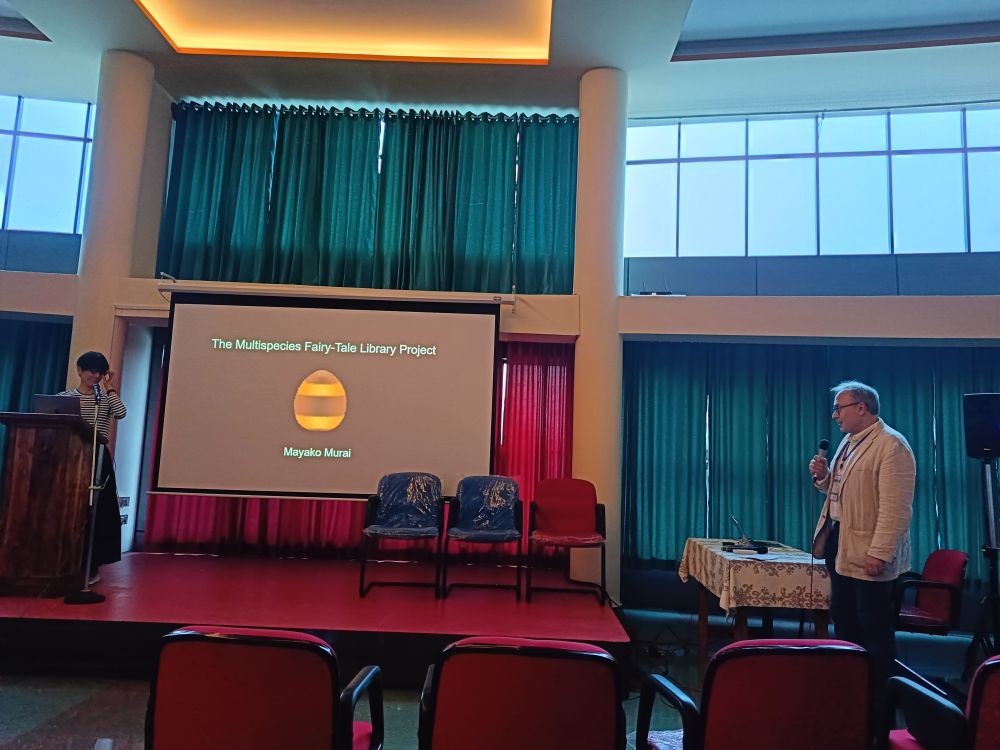
Diphu, January 18 (MExN): The 2nd and final day of the International Karbi Winter Workshop on January 17 culminated with a roundtable on “Indigenous (Religious) Research Methods (IRRM) from a Folkloristic Perspective” by three discussants researching on North-East India.
In the roundtable, Talilula from Nagaland proposed ‘Graphic Ethnography’ as an alternative approach to research and indigenous storytelling traditions.
Outlining the scope it presents in its varied forms and combinations, she underscored how it can be a powerful tool for indigenous representation as visualisation of worldviews and cosmologies are transferred to the owners of tradition.
Talilula also highlighted on how it can generate new ethnographic insights through the sensory-aesthetic, and develop representational awareness.
Margaret Lyngdoh of Meghalaya outlined the viability of an alternative indigenous research method from the perspective of folklore theory by proposing an emic-ethical, alternative method for approaching indigenous ontology within the context of Northeast India.
Through her research, she demonstrated new methods in how indigenous communities can identify ‘Tradition Tropes’ citing the example of water within the Khasi ontology.
Archiving of indigenous narratives must the prerogative of every scholar or student at micro, and vernacular levels, proposed Reep Pandi Lepcha from Sikkim.
In doing so, she highlighted how archives, although housing the knowledge systems and lifeways of the indigene, have been inaccessible to indigenous peoples in the past.
Accordingly, it has become evident that an alternative indigenous archiving system needs to be devised, Lepcha contented.
She proposing a unique format catering to conserving, co-sharing, and co-learning of knowledge, made accessible to the members of the respective indigenous communities and generated by the community.
Chaired by Seth Schermerhorn, the roundtable was followed by community engagement by discussants from the Karbi Community-Akar Rongphar, Jirdat Engleng, Klir Tissopi and Seridon Terongpi.
Earlier, Mayako Murai from the Kanagawa University opened the second day with the Plenary Lecture II by outlining the contours of her Multispecies Fairy-Tale Library Project which seeks to design a new framework for a narrative research that would foster multispecies coexistence.
“What kind of multispecies story-scape may emerge if we make a library of multicultural fairy tales by classifying them according to the experiences not only of human beings and their fictional alter egos in animal form, but also of other-than-human beings who perceive, experience, and inhabit the world in different ways from the ways humans do?” she posed.
Murai further pointed out the anthropocentric biases in the Aarne Thompson-Uther tale type index, widely used by international researchers, and explained why she designed the Multispecies Fairy-Tale Library to accommodate different narrative traditions.
She also suggested the possible uses of such library for imagining a multispecies future.
The theme of multispecies entanglements, placelores and placemaking in vernacular belief continued into the next session chaired by Gregory Alles of McDaniel College.
It featured presentations on ‘Placemaking through Vernacular Belief and Ritual Festivities: The Case of Boiddonathpur,’ by Malay Bera, Ashoka University; ‘Mutuality in Embodied Space: Analysing the Existential Reality of Gujjars and Bakerwals through Folklore’ by Tanu Gupta IIT, Jammu; ‘Storying the Space Around a Dead Body: Narratives From the Funeral Nights,’ by Henry Robert Goldsmith, University of Tartu; and ‘Bloomington on‘Liminal Placemaking: Fluid Identities within Shifting Geographies,’ by Garima Plawat, Indiana University.
Meanwhile, the afternoon session chaired by Murai examined issues surrounding indigenous landscapes
In the session, Seth Schermerhorn of Hamilton College grounded the study of indigenous religious traditions, and more specifically, Tohono O’odham Catholicism, in a sense of place and deliberate movement across ancestral landscapes in his paper titled, ‘Walking to Magdalena: Indigenous landscapes in O’odham Oral traditions.’
Ülo Valk, University of Tartu, focused on the placelore of North Eastern Estonia from the 19th to 21st centuries in his presentation “Ideology, Religion, Contested territories and Places.”
In ‘Storying the Places of Massacre: The Examples of Mangadh Hill and Sand Creek,’ Gregory Alles examined such two storied locations- Mangadh Hill (Rajasthan-Gujarat border, India), and Sand Creek (Colorado, USA).
The workshop ended with closing remarks by Margaret Lyngdoh and a final dinner hosted by the University of Tartu at the Diphu Arboretum, informed a press release from the organiser.
The Workshop held under the theme, “Place in Stories, Stories in Place: Narrating Landscapes in Folklore and Indigenous Oral Traditions” was held at Jirsong Asong, Diphu, Karbi Anglong.
It was organised by the Centre for Karbi Studies (CKS) and the Department of Estonian and Comparative Folklore, University of Tartu, in collaboration with the Centre for Oriental Studies, (University of Tartu).


